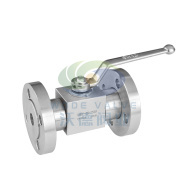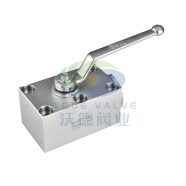News
Understanding the Working Principle of a Swing Check Valve: A Comprehensive Guide
Time:
Jan 24,2025
Understanding the Working Principle of a Swing Check Valve
Table of Contents
- 1. Introduction to Swing Check Valves
- 2. Design Features of Swing Check Valves
- 3. Working Principle of a Swing Check Valve
- 4. Applications of Swing Check Valves in Industries
- 5. Advantages of Using Swing Check Valves
- 6. Maintenance and Troubleshooting of Swing Check Valves
- 7. Selecting the Right Swing Check Valve
- 8. Conclusion
- 9. Frequently Asked Questions (FAQs)
1. Introduction to Swing Check Valves
Swing check valves are crucial components in many **industrial systems**, primarily used to prevent the **backflow** of fluids. Their operation relies on the **gravity** and **flow pressure** to open and close the valve, making them one of the simplest yet most effective designs in flow control technology. Understanding how these valves work is essential for engineers and technicians to ensure they are applied correctly in various settings to maintain safety and efficiency.
2. Design Features of Swing Check Valves
Swing check valves come with specific design features that enhance their functionality. These include:
2.1 Body Construction
The body of a swing check valve is typically constructed from durable materials like stainless steel, cast iron, or plastic, suitable for different **environmental conditions** and **fluid types**.
2.2 Disc Mechanism
The disc, or flap, is a critical part of the swing check valve. It pivots on a hinge, allowing fluid to flow through when opened. The design of the disc significantly impacts the valve's performance and sealing capability.
2.3 Hinge Pin
The hinge pin allows the disc to swing open and close smoothly. A well-designed hinge will prevent wear and tear, prolonging the valve's lifespan.
2.4 Sealing Surface
The sealing surface is where the disc makes contact with the valve seat to prevent backflow. The quality of the sealing surface is critical for ensuring a leak-proof operation.
3. Working Principle of a Swing Check Valve
The operation of a swing check valve is straightforward yet fascinating. It functions based on the principles of **fluid dynamics** and **gravity**.
3.1 Flow Initiation
When fluid begins to flow in the forward direction, it creates pressure that pushes against the disc. This pressure overcomes the weight of the disc, causing it to swing open.
3.2 Flow Regulation
As long as the fluid flows in the intended direction, the disc remains open, allowing for **uninterrupted flow**. The hinge mechanism allows for quick and smooth opening and closing, ensuring efficient flow regulation.
3.3 Backflow Prevention
In case of flow reversal or a drop in pressure, gravity and the fluid's back pressure act on the disc, causing it to swing back and seat firmly against the valve body. This action effectively prevents backflow, protecting the system from potential contamination or damage.
4. Applications of Swing Check Valves in Industries
Swing check valves are widely utilized across various industries due to their reliability and effectiveness. Common applications include:
4.1 Water Supply Systems
In water distribution networks, swing check valves help maintain one-way flow, preventing back siphoning that could lead to contamination.
4.2 Oil and Gas Industry
Swing check valves are essential in pipelines to control the flow of crude oil and natural gas, ensuring that backflow does not occur during system shutdowns.
4.3 HVAC Systems
These valves play a critical role in heating, ventilation, and air conditioning systems to prevent backflow, ensuring efficient operation.
4.4 Food and Beverage Processing
In food processing, swing check valves help maintain hygiene standards by preventing backflow that could contaminate products.
5. Advantages of Using Swing Check Valves
The use of swing check valves offers numerous benefits:
5.1 Simple Design
Swing check valves feature a straightforward design that makes them easy to install and maintain.
5.2 High Flow Capacity
Their design allows for a high flow rate with minimal pressure loss, making them suitable for various applications.
5.3 Cost-Effectiveness
With fewer components, swing check valves are often more cost-effective than other check valve types, offering excellent value for money.
5.4 Reliability
Swing check valves have a proven track record of reliability, making them a preferred choice in critical applications.
6. Maintenance and Troubleshooting of Swing Check Valves
Regular maintenance is essential to ensure the longevity and proper functioning of swing check valves. Here are some key practices:
6.1 Regular Inspection
Routine inspections can help identify issues such as wear and tear, corrosion, or debris accumulation that could impede valve function.
6.2 Cleaning
Maintain the sealing surfaces clean to prevent leaks and ensure a proper seal.
6.3 Replacement of Worn Parts
Replace any damaged components promptly. This includes the disc, hinge pin, or any sealing materials.
6.4 Testing
Conduct regular pressure tests to ensure the valve operates correctly under different conditions.
7. Selecting the Right Swing Check Valve
Choosing the appropriate swing check valve for a specific application involves several considerations:
7.1 Fluid Type
Consider the properties of the fluid, including temperature, viscosity, and corrosiveness, when selecting a valve material.
7.2 Pressure and Temperature Ratings
Ensure the valve can handle the system's pressure and temperature conditions without failure.
7.3 Installation Orientation
Swing check valves are typically installed in a horizontal or vertical position; however, their orientation may affect performance.
7.4 Size and Flow Rate
Select a valve size that accommodates the necessary flow rate while minimizing pressure loss.
8. Conclusion
Understanding the working principle of swing check valves is vital for anyone involved in industrial applications that require precise flow control and backflow prevention. Their simple yet effective design, coupled with a wide range of applications, makes them an indispensable component in many systems. Proper selection, installation, and maintenance will ensure they operate efficiently, safeguarding the integrity of various industrial processes.
9. Frequently Asked Questions (FAQs)
9.1 What is the main function of a swing check valve?
The primary function of a swing check valve is to prevent backflow in piping systems, ensuring that fluids only flow in one direction.
9.2 How does a swing check valve operate?
A swing check valve operates by using a disc that swings open when forward flow occurs and closes when backflow is detected.
9.3 What are the main advantages of swing check valves over other types?
Swing check valves offer a simple design, high flow capacity, cost-effectiveness, and reliability, making them suitable for various applications.
9.4 How can I maintain a swing check valve?
Regular inspections, cleaning, replacement of worn parts, and pressure testing are essential maintenance practices for swing check valves.
9.5 Can swing check valves be used in high-pressure systems?
Yes, swing check valves can be designed to operate efficiently in high-pressure systems, provided they meet the necessary pressure and temperature ratings.
RELATED NEWS




